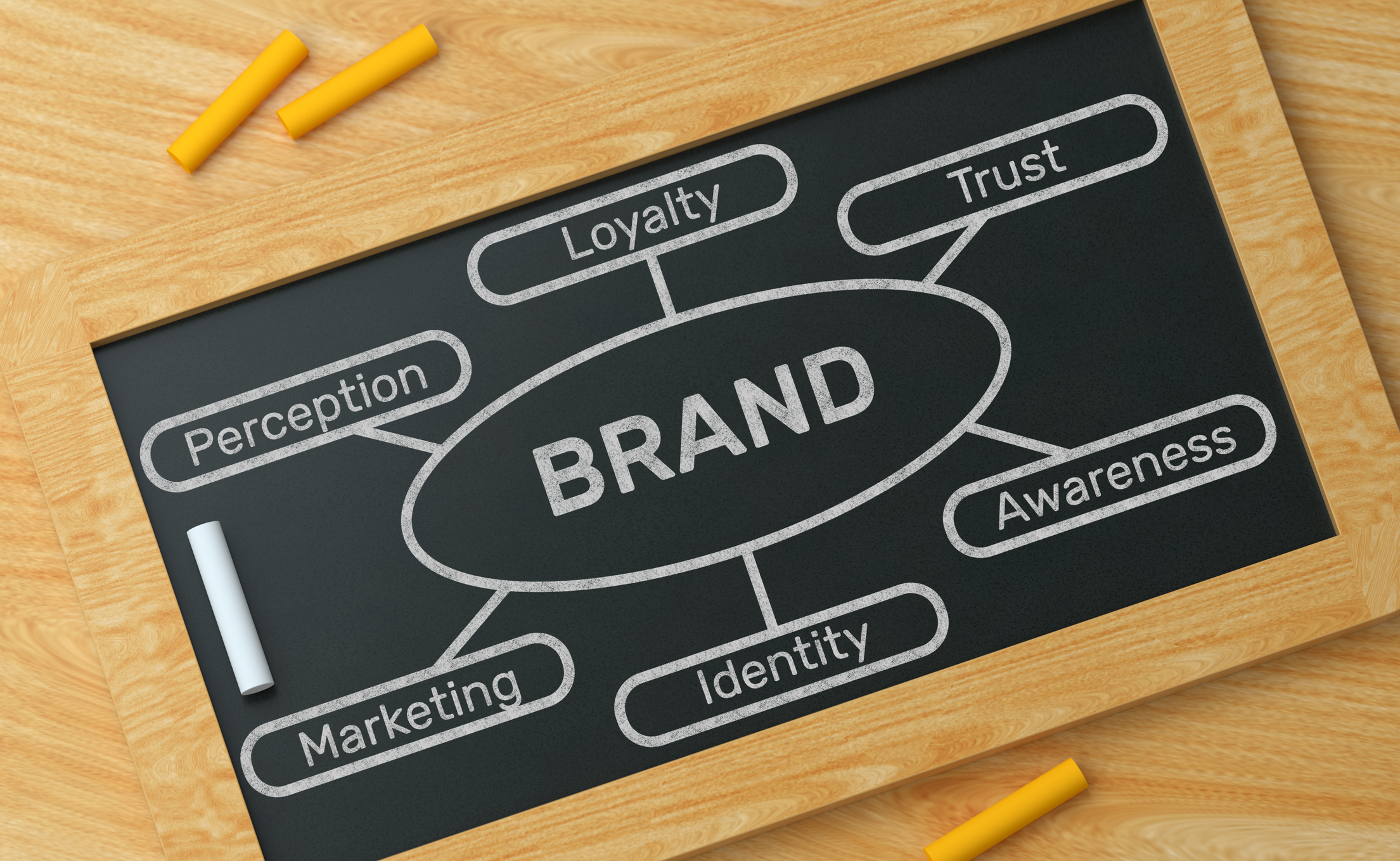No matter how many digital marketing tactics you try, you can only nail your strategy if you know what works and what doesn’t.
As a small business owner with limited resources, measuring effectiveness ensures you’re committing your time and money to digital marketing efforts that actually get results.
So, what metrics should you be looking at? The short answer is it depends on your small business marketing objectives.
This guide covers some common digital marketing goals and how to see if your marketing strategy is working.

Brand awareness.
Brand awareness refers to how familiar your target audience is with your brand. This generally includes awareness of three things:
- Your brand name and logo
- Your product or service offering
- Your business values and reputation
Building brand awareness is a critical step in establishing your business – after all, if customers don’t know that you exist within your industry, how can they choose your products or services?
What are the 4 stages of brand awareness?
There are four levels or stages of brand awareness, which are based on marketing mogul David Aaker’s brand loyalty pyramid. These stages of brand awareness are
- Zero awareness
- Recognition
- Brand recall and
- Top of the buyer’s mind.
Businesses with a high degree of brand awareness who are at the top of the buyer’s mind (as defined as the last stage in the brand awareness pyramid) also tend to generate more sales in the long run. In fact, 71% of consumers are more likely to buy a product or service from a name they recognise.
When you’re looking to build brand awareness, measurement is the first step of the journey. Assessing where you’re at will give you a benchmark to work from and highlight areas where you need to ramp up or adjust your digital marketing strategy.
Key metrics to measure brand awareness.
1. SERP rankings.
SERP stands for search engine results page, which is the list of web pages that a search engine shows in response to someone searching for a keyword or phrase. Your SERP ranking is the position you show up in when someone searches for something relevant to your business. The higher up your business appears in relevant SERPs, the more likely it is that prospective customers will be aware of your brand.
For example, let’s say you’re an electrician based in Parramatta. Ideally, you would want your business website to show up on the first page of search results for related queries like ‘electrician Parramatta’, ‘electrician Western Sydney’ and ‘licensed electrician Parramatta’.
If you notice that your business isn’t appearing on page one (or two, three or four) for relevant terms, this is a sign that you should focus on growing your SERP ranking organically through SEO.
2. Direct traffic
Direct traffic is website traffic that results from people typing in your website address or clicking on a bookmark, rather than clicking through from a search engine, ad or social media. This is an important metric because it shows that people are already aware of your brand – they’re not just finding you through a general web search.
You can check your website’s direct traffic using Google Analytics, which is a free tool with detailed data about your website’s traffic and visitors.
3. Social followers.
Tracking how many new followers your brand gets on social media over a certain period can tell you whether awareness of your brand is growing. A spike in new followers during a digital marketing campaign is a good indication that your strategy is boosting your brand awareness efforts.
RELATED: eBook: How to choose the right social media platform for your business.

Engagement.
Engagement goes a step further than brand awareness to show how your target audience is interacting with your brand. High levels of engagement indicate a level of trust with your audience, which is crucial for moving prospective customers down the sales funnel from awareness to consideration.
Forty-six percent of consumers say they would pay more for brands they trust, and consumers who trust a brand are more than twice as likely to stay loyal to it.
Key metrics to measure engagement.
1. Social engagement.
Social engagement includes likes, comments, shares, retweets and more, and it’s a reflection of how many people interact with your brand. An increase in social engagement demonstrates that your digital marketing efforts are growing an active, interested audience base, while a decrease in engagement is a sign that your strategy needs adjusting. This could include tweaks to your social media content, the times you’re posting or the platforms you’re focusing on.
RELATED: 7 Social media metrics you should be tracking.
2. Website traffic.
Looking at overall site traffic will tell you how often your audience is checking out your content and engaging with your brand. It’s also a good idea to keep an eye on bounce rate, which is the percentage of people who visited a page on your website and then left without taking a look around the rest of your site. If your bounce rate is dropping, it shows that people are spending more time on your website and interacting more deeply with your brand.
3. Email subscription sign-ups.
An increase in email subscription sign-ups demonstrates that more people want to interact with your brand – whether that’s reading your newsletter, finding out about promotions and special offers or being invited to events. You can also measure engagement on a more granular level by looking at metrics like open rates and click-through rates for individual emails.
RELATED: What is eDM marketing and how does it work for small businesses?

Lead generation.
Lead generation is any strategy a business uses to attract, engage and nurture people who might one day become a customer. When it comes to digital marketing, this can include SEO, SEM, social ads, display ads and content marketing.
It goes without saying that lead generation is incredibly important, because leads drive sales and help sustain a profitable business. It’s no surprise, then, that this is one of the main factors marketers track when measuring the success of a digital campaign.
What are the 4 steps of the lead generation process?
There is obviously more to lead generation than 4 simple steps, but to simplify the process we have outlined what are essentially the 4 main areas that need to be explored in order to generate leads. These include:
Step 1: Identify your target audience and gather as much information about them as you can.
Step 2: Create value for your target audience through great content, enticing offers (incentivise their reason to sign up or subscribe).
Step 3: Generate leads through these sign-up offers and then ensure you are able to track where these leads came through so you can categorise your leads based on their interests.
Step 4: Qualify and nurture your leads by continuing to deliver valuable content, advice and related offers.
Key metrics to measure lead generation.
1. Inquiries.
The most obvious way to measure lead generation is by tracking the number of inquiries coming in. Have you been receiving more calls or emails from potential customers? Has the number of people filling in the contact form on your website increased? Keeping an eye on these numbers helps measure the effectiveness of your digital marketing initiatives.
2. Qualified leads.
Keep in mind that not all leads are created equal. For example, it’s not going to be very helpful if you’re based in Melbourne and someone from Perth calls to ask if you’re available to do a job. That’s why it’s important to track qualified leads – prospects who fit the profile of your target customer.
To identify your qualified leads, it’s helpful to consider your most successful customers’ common traits, such as:
- Age, gender and geographic location
- Job roles and salary brackets, or budgets for B2B customers
- Online habits
- Buying behaviours
If you find that your digital marketing strategy is consistently bringing in the wrong types of leads, it could be an indication that you need to fine-tune your audience targeting for paid ads or focus on local SEO.
The ultimate end goal of lead generation, and digital marketing in general, is to boost sales. With this in mind, an uptick in sales is a sure sign that your hard work is paying off – so give yourself a pat on the back!
RELATED: How to use guest posts and podcasts for lead generation.
Need help with your small business’ digital marketing?
Whether it’s an online ad on Australia’s favourite business directory, SEM, social ads or more, Yellow Pages is the digital marketing agency that helps thousands of small businesses grow online each year. Find out how we can help.
